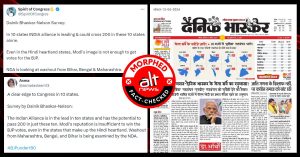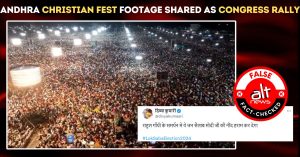Prime Minister Narendra Modi recently visited Germany from June 26 to June 28 for the 48th G7 summit. On his second day of the visit i.e., on June 27, PM Modi interacted with the Indian diaspora in Munich where he listed numerous “achievements” of the Indian government.
In the hour-long community programme, PM Modi took the stage at around 21 minutes and delivered a 33-minute-long speech, where he talked about India’s growth story and highlighted the various “achievements” of his government, such as India being “open-defecation free (ODF)” and that “every village” in the country is electrified.
However, amidst the interaction where the PM lauded the Indian community in Munich for promoting India’s “success story” and called them India’s “ambassadors”, lied half-truths, exaggerated assertions and falsehoods.
Claim 1: Every village in India is Open Defecation Free (ODF)
At 27:18 minutes in his speech, the PM said, “Today, every village in India is open defecation free.” However, the ground reality is at odds with PM Modi’s assertion.
Under the Swachh Bharat Mission, all villages, gram panchayats, districts, states and union territories in India declared themselves “open-defecation free” (ODF) by October 2, 2019. This is mentioned on the Swachh Bharat Mission website and was also reported by various media outlets.
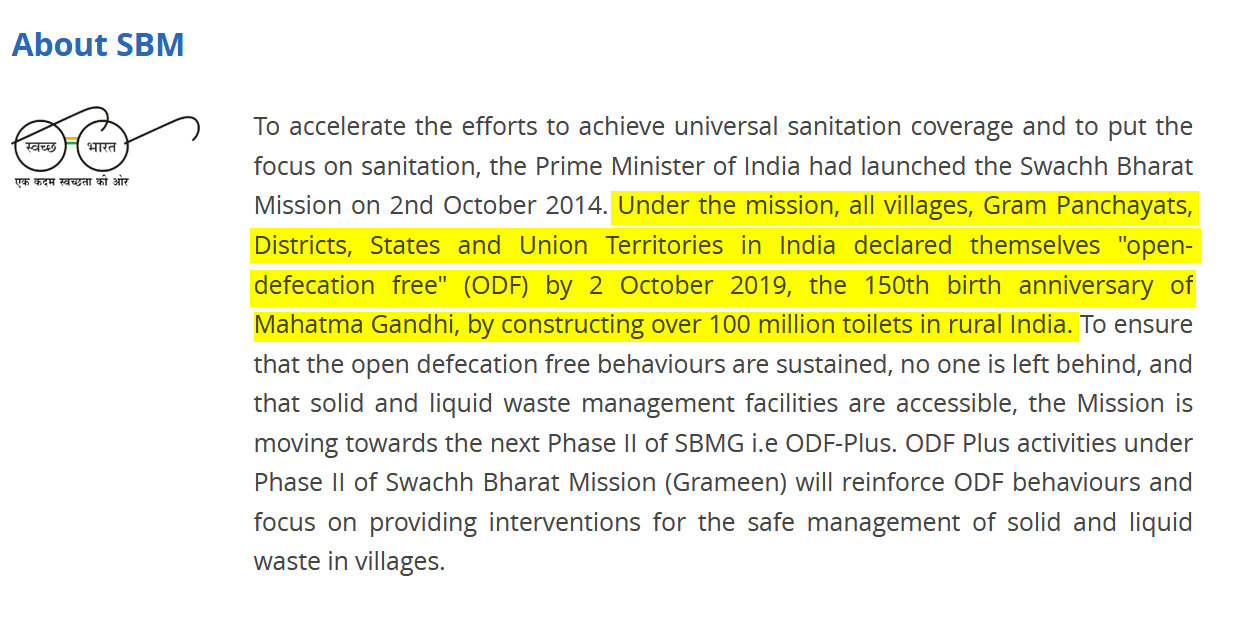
How does the government define ODF?
The government under Swachh Bharat Mission (Gramin) terms ODF as “the termination of faecal-oral transmission”, defined by:
1) no visible faeces found in the environment/village; and
2) every household as well as public/community institution using safe technology options for the disposal of faeces
To understand whether India has actually become open defecation free as suggested by the PM, we looked at two data sources – the fifth National Family Health Survey (2019 – 2021), and the third round of the National Annual Rural Sanitation Survey (NARSS).
NFHS data
The National Family Health Survey-5 (2019 – 2021) or NFHS-5, published in March 2022, provides percentage distribution of households by the type of toilet facility available, and also the access to toilets based on religion, caste and wealth distribution. As per the latest data, 83% of households have access to a toilet facility in the country, and 17% do not use any toilet facility.
[It is important to note that the NFHS figures are usually rounded up, hence the figure could vary when tallied.]
When we compared this with the data provided in NFHS-4 (2015 – 2016) report, there is definitely an improvement. As per NFHS-4, 39% of households practised open defecation compared to the latest data of only 17% of households practising open defecation.
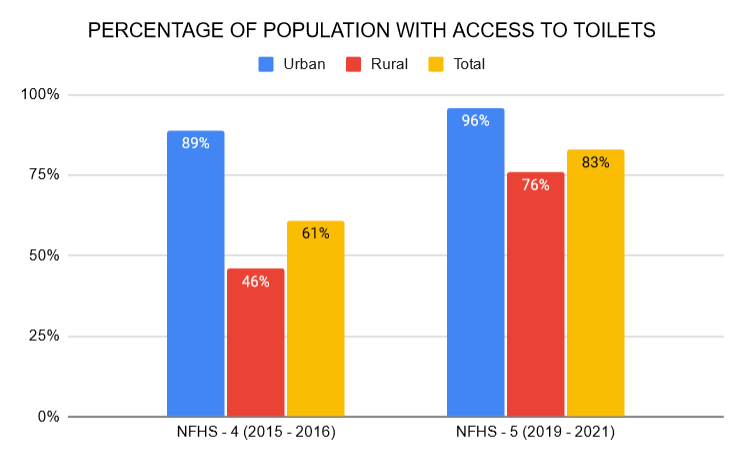
According to NFHS-5, among the states/UTs, access to a toilet facility is lowest in Bihar (62%), followed by Jharkhand (70%) and Odisha (71%). Despite improvement, the latest NFHS report does not indicate that the country is 100% ODF.
National Annual Rural Sanitation Survey (NARSS) data
The NARSS round 3 (2019 – 2020) report carried various indicators for households with toilets. The report reads, “The information on accessibility to toilet facility for the household was collected through a combination of four responses which included:
i) Own toilet: Households with access to a toilet which is exclusively
used by members of the household
ii) Shared toilet: Household with access to toilet used by multiple families
iii) Community toilets: Households with access to a public toilet facility (toilet is open to the general public); and
iv) No toilet access: Households do not have access to any toilet (family members usually defecate in the bush, fields, or other locations).”
As per the report, the percentage of households practising open defecation decreased from 6.7% in NARSS Round-2 (2018-19) to 5.6% in NARSS Round-3 (2019-20) at the national level. In NARSS Round-1 (2017-18), the percentage of households practising open defecation was reported to be 24%. Below we have added a chart to visually represent the trend line.
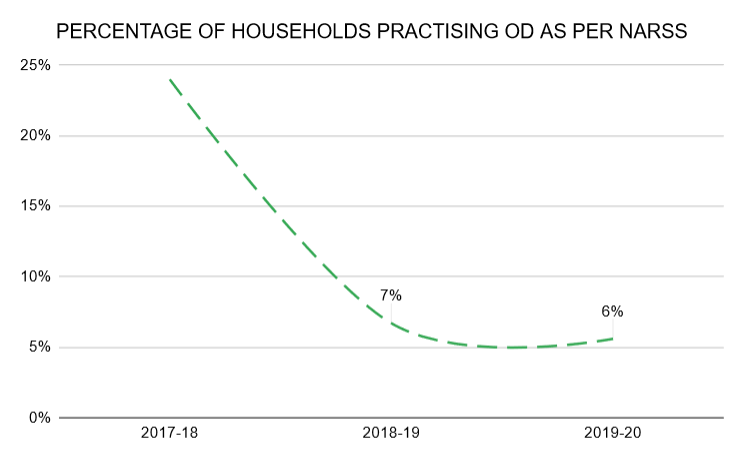
According to UNICEF, in 2015, nearly half of India’s population, around 568 million people practised open defecation. The number came down to an estimated 450 million by 2019. UNICEF credits the government’s flagship programme, the Swachh Bharat Mission (SBM), for the achievement.
Despite discrepancies in data provided by various government reports, we don’t see any surveys mentioning India as 100% open defecation free. However, we do notice a trend that shows a decline in the practice of open defecation over the years.
Claim 2: Electricity has reached every village in the country
At 27:30 minutes, the PM said that electricity has reached every village in the country. The government launched the Deen Dayal Upadhyaya Gram Jyoti Yojana (DDUGJY) scheme in December 2014 for rural electrification works across the country and in October 2017, the Pradhan Mantri Sahaj Bijli Har Ghar Yojana (Saubhagya) scheme was launched for electrification of the remaining unelectrified households in rural as well as urban areas.
As per the NFHS-5 (2019-2021) data, 96.8% of the Indian population lives in households with electricity. This means that over 3% of the Indian population lives in unelectrified homes. 99% of urban households and 95% of rural households have electricity.
On April 28, 2018, PM Modi announced that every single village in India was electrified. But as per reports by Forbes and The Wire at that time, 31 million homes in India were still unelectrified. This is due to the definition of “electrified village” that has been in place since 1997. A village is deemed to be electrified if basic infrastructure such as:
- A distribution transformer and distribution lines are in place in an inhabited locality,
- Electricity is provided to public places like schools, panchayat offices, health centres, dispensaries, and community centres; and
- At least 10% of the households in the village are electrified.
India has provided electricity access to 2.82 crore households under the Saubhagya scheme. However, the insincere definition of “electrified village” does not reflect the actual level of success on the ground. It has received widespread criticism, amid the government celebrating the “success” of rural electrification.
To sum it up, the claim that India has achieved 100% electricity in all its villages is based on an insincere definition of electrification that has been in place since 1997.
Claim 3: More than 99% of the Indian population has a gas connection
At 27:50 minutes, the PM claimed that more than 99% of the Indian population has a gas connection for “clean cooking”. We checked the data of NFHS-5 (2019 – 2021) about the types of cooking fuel used by the urban and rural Indian demographies.
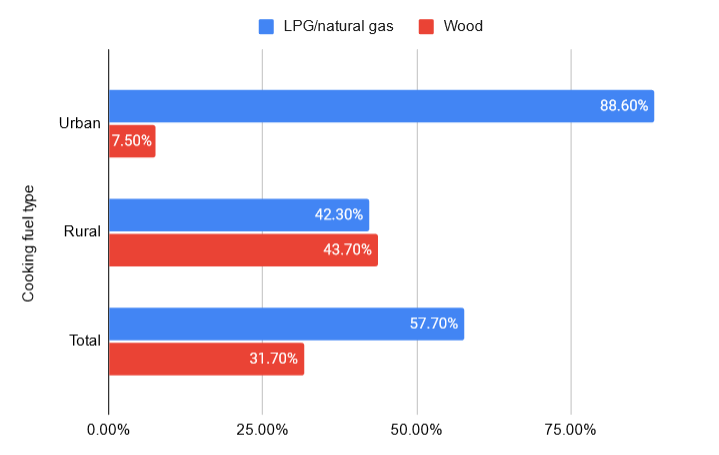
As per the data, 57.7% of the Indian population use LPG/natural gas as cooking fuel, while the other sources can be biogas, charcoal, etc. The report reads, “Forty-one percent of households in India use some type of solid fuel for cooking, with virtually all being wood or dung cakes.” 31.7% of households use wood as fuel for cooking.
According to the World Health Organization (WHO), around 2.4 billion people around the globe still cook using solid fuel. These cooking practices are inefficient and use fuels and technologies that produce high levels of household air pollution. Smoke-induced diseases are responsible for the death of 4.3 million people every year. It is one of the most lethal environmental health risks worldwide. The World Health Organization also maintains a household energy database used to monitor global progress in the transition to cleaner fuels and stove combinations in households.
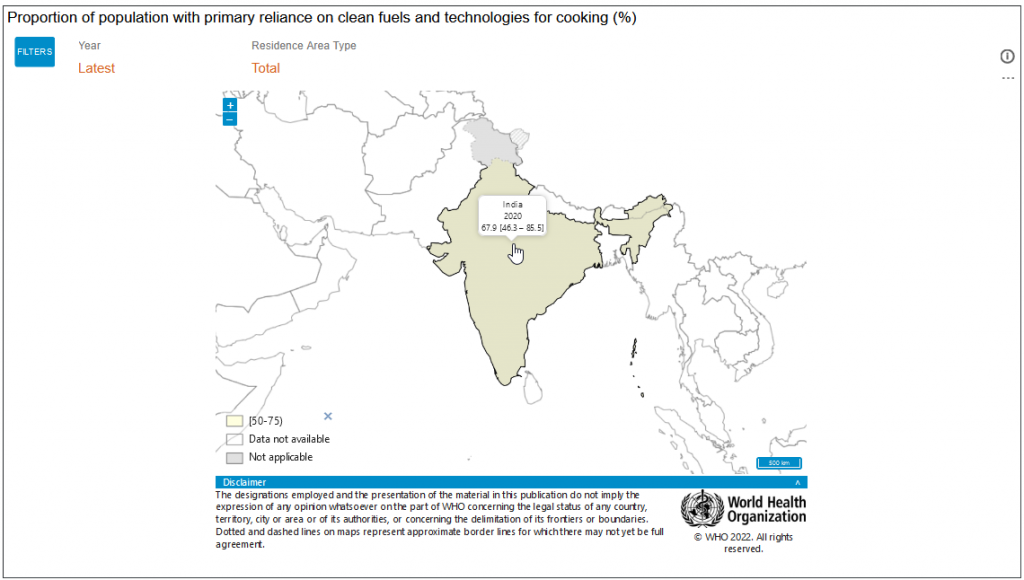
As per WHO’s Household energy database, in 2022, 67.9% of Indians have access to clean fuels and technologies for cooking. It is important to note that the sample size used by WHO for the survey is significantly smaller than the sample size used by government agencies. However, both government sources, as well as international sources, do not indicate that more than 99% of the Indian population has access to clean sources for cooking.
Smidgens of truth, half-truths and hyperbole
While a large part of the Prime Minister’s speech contained misleading claims, certain achievements mentioned by him were indeed true. For example, the claim that 40% of the world’s real-time digital transactions happen in India is genuine. India made 48.6 billion real-time payments through 2021 – which is over 2.6 times higher than China.
The PM claimed that every poor Indian family is provided up to Rs 5 lakh rupees for free medical treatment. Beneficiary families under Ayushman Bharat – Pradhan Mantri Jan Arogya Yojana (AB-PMJAY) do receive this health insurance. They have been identified from the Socio-Economic Caste Census (SECC) of 2011 on the basis of select deprivation and occupational criteria across rural and urban areas. For instance, one of the criteria for a rural household to qualify for AB-PMJAY is the absence of adult members between the age of 16 and 59 in the family. Another criterion is that the family should be living in a one-room house with kucha walls and a kucha roof. Thus, a cursory examination of the Prime Minister’s statement deems the claim to be true. A PhD scholar at IIM Ahmedabad had found that AB-PMJAY follows “a prospective payment mechanism: the upper ceiling of the treatment cost is predetermined and fixed”. It gives the illusion that the treatment is “free” but every treatment or procedure has a fixed amount that has been predetermined. Any amount beyond the limit set for the package might have to come from the pockets of the patients.
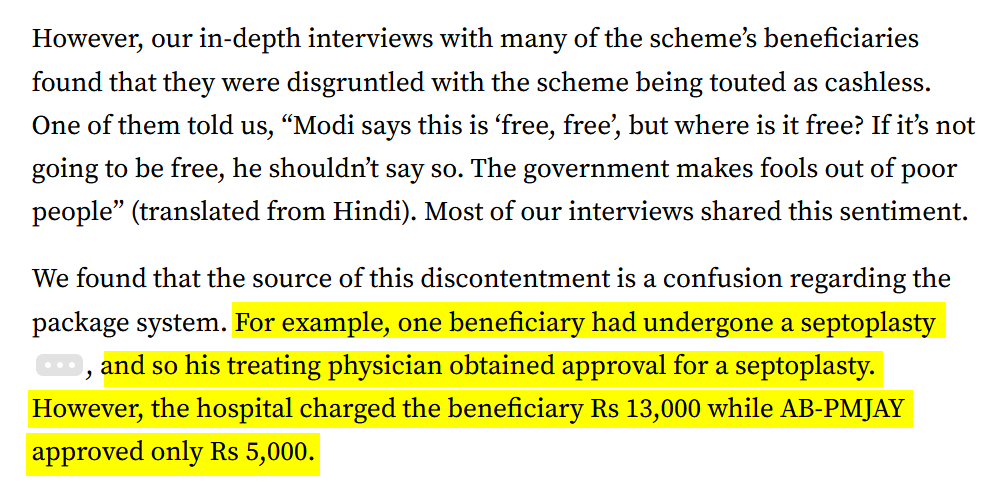
There have also been cases where patients could not avail treatment because their conditions aren’t covered by the scheme. In 2019, AIIMS and the National Health Authority (NHA) made a request to the health ministry for allowing Ayushman Bharat beneficiaries to avail of high-cost treatment for life-threatening diseases under the Rashtriya Arogya Nidhi. They cited cases wherein Ayushman Bharat beneficiaries could not avail of treatment for blood cancer and chronic liver diseases as these are not covered under the health insurance scheme. In 2020, the Union Health Ministry revised its guidelines, after initially rejecting the proposal made by AIIMS and NHA. Some of the other issues that were flagged by AIIMS were:
- AB-PMJAY packages rates are not commensurate with actual costs incurred/estimates provided by the doctor
- AB-PMJAY scheme provides coverage of medicines post-discharge for up to 15 days only, whereas certain cancer patients require long-term medications on an outpatient basis and hence cannot be extended benefits under the AB-PMJAY scheme, which requires in-patient admissions as per rules.
- Some states have portability restrictions due to which the AB-PMJAY beneficiaries being treated at AIIMS cannot avail of the benefits of the scheme outside their state.
The PM also claimed that the government has been providing free rations to 80 crore families for the last two years. This statement is true. Under Pradhan Mantri Garib Kalyan Anna Yojana (PMGKAY), 5 kg of food grains (wheat, rice, coarse grain) is provided to each beneficiary each month free of cost. The beneficiaries are recognised through the National Food Security Act (NFSA), 2013. As per NFSA’s own website, 80 crore persons are covered under NFSA.
The PM claimed that every month on average, 18 lakh families are being connected to a piped water supply. We could not find data on how many families have been onboarded for piped water supply. However, using the database of Jal Jeevan Mission, we found that in 2021 on average 20 lakh households were provided with tap water supply every month.
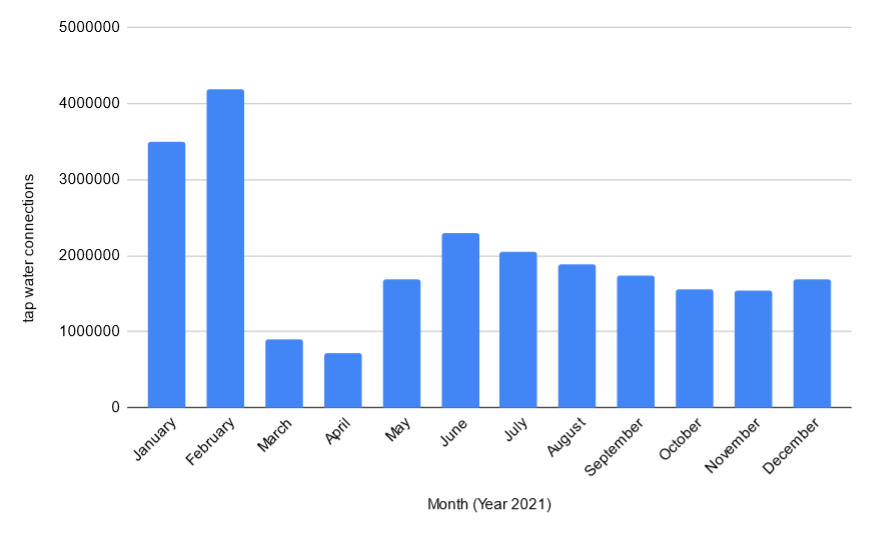
PM Modi also claimed that India is one of the few countries in the world where mobile data is the cheapest. This is true as per the annual worldwide mobile data pricing report by Cable.co.uk.
The PM claimed that 110 crore registrations have been made on the CoWin portal. This is true. As per the dashboard on CoWin, 1,09,87,86,318 registrations have been made so far. The PM also claimed that 90% of adults in India are fully vaccinated i.e., they have received both doses. This is also true and can be verified using the dashboard on vaccinations maintained by The Hindu. He further claimed that 22 crore Indians are connected with Aarogya Setu App. As per the dashboard on the Aarogya Setu website, 21,68,00,000 downloads have been made on iOS and Android devices. But it must be noted that the number of downloads does not reflect the number of active users. Moreover, the Supreme Court criticised the use of IT applications for vaccination, observing that “a vaccination policy exclusively relying on a digital portal for vaccinating a significant population of this country between the ages of 18-44 would be unable to meet its target of universal immunisation owing to such a digital divide”. There are also reports that have flagged the issue of relying on a digital system for contact tracing.
The PM claimed that more than 10 crore toilets have been built in India. This is true. As of July 2019, over 9.5 crore toilets had been built across India since the launch of the Swachh Bharat Mission. The number must be closer to 10 crores in 2022. However, in 2019, the Parliamentary Standing Committee on Rural Development reported that many toilets constructed under the Swachh Bharat Mission were defunct and unusable.
PM Modi claimed that all Indian families are connected to banking services. We checked the 2021 Global Financial Inclusion data by the World Bank. As per the data, 77.5% of people age 15+ have a bank account. 81.3% of people age 25+ have bank accounts.
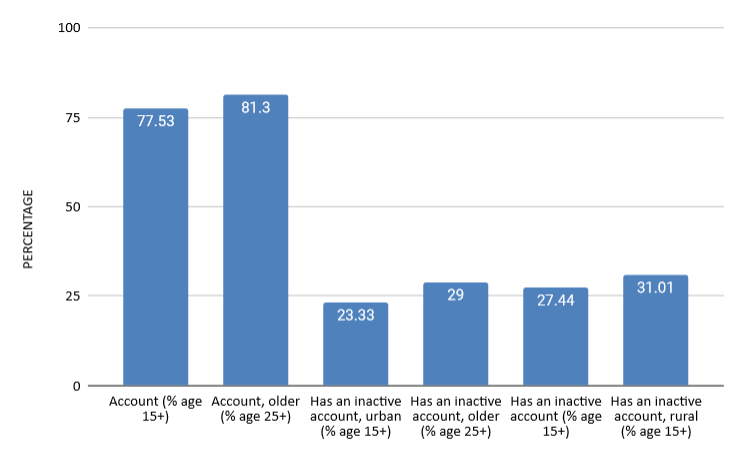
However, as per the report, 27.44% of the accounts of people age 15+ are inactive. In rural areas, the inactive account percentage of the age group 15+ is 31.01% and in urban areas, the figure is 23.33%. Similarly. 29% of the bank accounts of people of age 25+ are inactive. In summary, a large number of people having bank accounts does not necessarily mean that the accounts are active.
The PM also made a few claims that could not be fact-checked. For example, he said that every month on average 5,000 patents are being filed. Even if this were true, filing a patent does not necessarily mean technological innovation or progress.
To summarise, PM Modi’s speech addressing the Indian diaspora in Munich, Germany was a mix of truth, half-truths, falsehoods and exaggeration of the achievements of the Indian government.
Independent journalism that speaks truth to power and is free of corporate and political control is possible only when people start contributing towards the same. Please consider donating towards this endeavour to fight fake news and misinformation.
